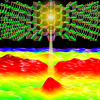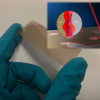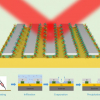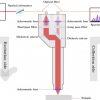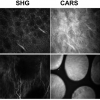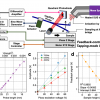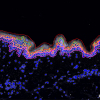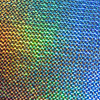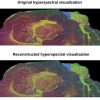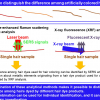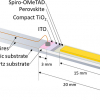Spectroscopy News
Scientists at the University of Bonn have built optical fibre filters in a very simple way. They are not only extremely compact and stable, but also colour-tuneable.
With forest fires becoming increasingly prevalent and severe due to climate change, a detailed understanding of the composition of their smoke is important.
Researchers have, for the first time, measured the spectra of phonons at individual crystalline faults, and discovered the propagation of phonons near the flaws.
A new study has improved a chemical sensing chip based on surface-enhanced Raman spectroscopy (SERS) that aims to identify drugs and other trace chemicals quickly and accurately.
Researchers from the Sheffield Institute for Translational Neuroscience (SITraN) have used 31P magnetic resonance spectroscopy to measure the function of mitochondria in patients with motor neuron disease.
Does a new company have the answer to the non-invasive glucose monitoring question?
A new SEIRA device has been developed that can utilise the surface tension of liquid to concentrate and trap analyte molecules at the most sensitive locations of the device structure.
Researchers have shown that Raman spectroscopy can help in the early detection of oral squamous cell carcinoma.
An EU research project, CARMEN, aims to develop a multimodal imaging system capable of detecting cancerous cells during surgery.
Camo Analytics, producer of the Unscrambler chemometrics software, has been acquired by Aspen Technology, Inc.
Researchers from Osaka University have developed a new MSI method for brain tissue analysis in high spatial resolution that requires no sample preparation.
Multimodal imaging is being used by scientists to study skin ageing through the interaction of metabolism, cellular communication and cellular quality control in skin ageing accelerated by environmental stress.
The ModMol app enables the visualisation and editing of molecules in an augmented reality environment on Apple and Android devices.
Strong investment in photonics will help us fight infectious diseases that kill an unimaginable number of people and prepare us against future pandemics, says Dr Jürgen Popp of the Leibniz Center for Photonics in Infection Research (LPI) that is currently under construction in Jena.
Researchers in the UK and USA have used functional near infrared spectroscopy to discover that the cocoa flavanols found in chocolate improve brain oxygenation and cognition in healthy adults.
A new computational mass spectrometry imaging method enables researchers to achieve high mass resolution and high spatial resolution for biological samples while providing data sets significantly faster.
Scientists at Tokyo University of Science have combined SERS and XRF to distinguish between differently dyed individual hair strands for forensic investigations.
The British Mass Spectrometry Society, in partnership with the Chromatographic Society, offer summer studentships: deadline 15 January 2021.
The European Pharmacopoeia Commission has adopted a new general chapter on the analysis of N-nitrosamine impurities in active substances by GC-MS, LC-MS/MS and GC-MS/MS.
University of Tsukuba researchers have used electron spin resonance spectroscopy to take a molecular-level look at what happens in perovskite solar cells when they are operating, to determine the factors that affect their performance.



